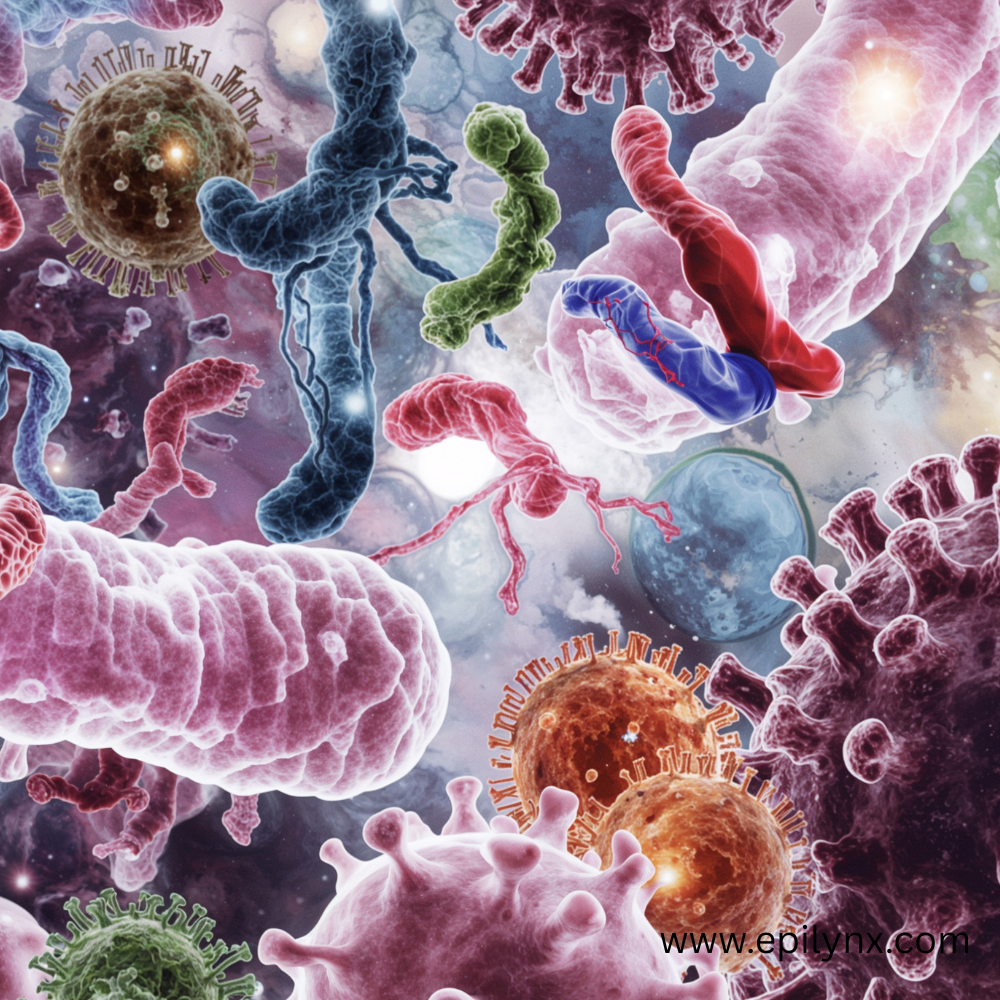Article: Circadian Skincare: Why Your Skin Has a 24-Hour Clock (and How to Sync Your Routine to It)

Circadian Skincare: Why Your Skin Has a 24-Hour Clock (and How to Sync Your Routine to It)
Your Skin Has a Schedule (Whether You Follow It or Not) 🕰️
Your skin is secretly more organized than you are.
It knows when to wake up, when to protect itself, when to repair, and when to rest — all without your input.
This rhythm, called the circadian cycle, runs every 24 hours and controls everything from cell turnover to oil production and hydration.
But here’s the catch:
Your lifestyle — late nights, screen time, skipped sleep — can throw this entire rhythm off, leaving your skin confused, dull, and stressed.
So let’s uncover your skin’s hidden daily schedule — and learn how to work with it for better results (without buying a single new product).
1. The Science Behind Skin’s Clock 🧬
Every cell in your body has a molecular “clock.”
These clocks are controlled by genes (like PER1, CLOCK, and BMAL1) that tell your cells when to perform certain functions.
📌 Science fact:
Your skin cells “wake up” and “sleep” just like you do — syncing to light and darkness.
During the day, they focus on defense (against UV, pollution, and stress).
At night, they switch to repair (DNA fixing, collagen building, barrier renewal).
💡 Fun fact:
Your skin’s circadian rhythm even affects how well products absorb — timing can change absorption rates by up to 30%.
2. Morning: The Defense Shift ☀️
6 a.m.–10 a.m.
Your skin’s mission: protection.
Cortisol levels rise, oil glands wake up, and your barrier thickens slightly to block UV and pollution.
📌 What happens now:
-
Skin produces more sebum to create a natural shield.
-
Blood flow is lower — that’s why you might look pale or puffy.
-
Antioxidant enzymes (your natural defense crew) are at peak activity.
✅ How to sync your routine:
-
Cleanse lightly. You don’t need to strip natural oils.
-
Apply antioxidants. Vitamin C, green tea, or niacinamide counteract UV damage.
-
Moisturize strategically. A light, hydrating layer is enough in the morning.
-
SPF is non-negotiable. You’re heading into your skin’s “battle hours.”
💡 Unexpected tip: Don’t use heavy occlusives in the morning — they trap heat and interfere with your skin’s cooling rhythm.
3. Midday: The Environmental Marathon 🏃♀️💨
10 a.m.–4 p.m.
Your skin is in survival mode — UV exposure, sweat, pollution, and blue light are all attacking.
📌 Science fact:
Your skin’s immune defenses are strongest between 10 a.m. and 2 p.m., when UV levels peak.
But hydration levels drop as skin loses water to heat and light.
✅ How to help:
-
Reapply SPF every 2 hours. Even if you’re indoors — UVA penetrates windows.
-
Hydrate mid-day. Mist or reapply a light moisturizer (especially in air conditioning).
-
Avoid harsh actives. Your skin’s busy defending itself — don’t distract it with acids or retinol.
💡 Fun fact: Blue light from screens penetrates deeper than UVB, generating free radicals that accelerate pigmentation.
4. Evening: The Transition Hour 🌇
5 p.m.–9 p.m.
This is when your skin shifts gears — from protection to repair.
📌 What happens now:
-
Blood flow increases — that’s why you “flush” after work or workouts.
-
Temperature rises slightly, making products absorb faster.
-
Melatonin (the sleep hormone) starts to signal cells to enter repair mode.
✅ How to sync your routine:
-
Double cleanse. Remove sunscreen, makeup, and pollutants — gently.
-
Feed your skin. Use hydrating serums (hyaluronic acid, niacinamide).
-
Moisturize. Your skin is prepping for overnight repair, so give it nutrients to work with.
💡 Practical tip: Apply actives (like retinol or acids) now — your skin is more receptive, and there’s no UV interference.
5. Night: The Regeneration Shift 🌙
10 p.m.–2 a.m.
This is prime time for repair.
If you’re asleep, your skin is at work.
📌 Science fact:
Cell turnover and collagen synthesis peak around midnight.
Skin permeability (absorption) is at its highest — up to 3× better than in the morning.
Meanwhile:
-
Melatonin acts as an antioxidant.
-
Growth hormone boosts tissue repair.
-
Microcirculation increases — giving that famous “morning glow.”
✅ How to help:
-
Sleep 7–8 hours. No serum can replace this.
-
Use calming ingredients. Panthenol, peptides, or oat extract.
-
Avoid heavy night creams if you’re acne-prone. They can trap sweat and slow repair.
💡 Unexpected fact: Staying awake past midnight doubles skin barrier recovery time the next day.
6. Late Night or All-Nighter: The Skin Meltdown Zone 😵💫
2 a.m.–5 a.m.
Your skin’s repair machinery is still running — but if you’re awake, you’re fighting it.
📌 What happens when you don’t sleep:
-
Cortisol rises again prematurely (stress alert!)
-
Collagen production drops
-
Blood circulation stagnates → dull, gray tone
-
Skin barrier becomes more permeable → sensitivity and inflammation
💡 Fun fact: Pulling an all-nighter can age your skin the equivalent of three days of natural wear and tear.
✅ Emergency reset tip:
-
Drink water before bed (yes, even at 2 a.m.)
-
Wash your face, moisturize, and sleep — even 3 hours of rest helps lower cortisol.
7. How to “Re-Sync” Your Skin Clock 🧭
If you’ve been out of rhythm (hello, insomnia, travel, or stress), you can reset your skin’s clock with simple habits:
☀️ In the morning:
-
Get 5–10 minutes of real sunlight. It resets your brain and skin circadian signals.
-
Hydrate inside and out — drink water + apply moisturizer within 2 minutes of cleansing.
🌇 In the evening:
-
Dim lights 1 hour before bed (melatonin trigger).
-
Avoid blue light after 10 p.m.
-
Keep your room cool (18–20°C = optimal skin repair temperature).
🧴 Routine tweaks:
-
Use SPF + antioxidants in daylight.
-
Use repairing and hydrating actives at night.
-
Keep your routine simple during stressful or jet-lag periods — your skin is recalibrating.
8. Circadian Facts You’ll Want to Tell Everyone 🔬
💡 Skin hydration levels are highest at night — and lowest mid-afternoon.
💡 Melatonin and growth hormone increase collagen by 25–30% during sleep.
💡 Late-night eating raises cortisol, which slows skin repair.
💡 Product absorption is three times higher at midnight.
💡 One week of poor sleep can reduce barrier function by 20%.
9. The Takeaway: Skincare Isn’t Just What You Use — It’s When You Use It 🧠
Your skin has its own rhythm — defending by day, healing by night.
When you fight it (with stress, screens, or all-nighters), you make it work overtime.
When you sync with it — sleep on time, protect by day, repair by night — your biology does the heavy lifting.
So the next time you reach for your serum, ask yourself:
“Am I using this when my skin actually wants it?”
Because timing isn’t everything.
It’s the difference between working against your skin — and working with it.

